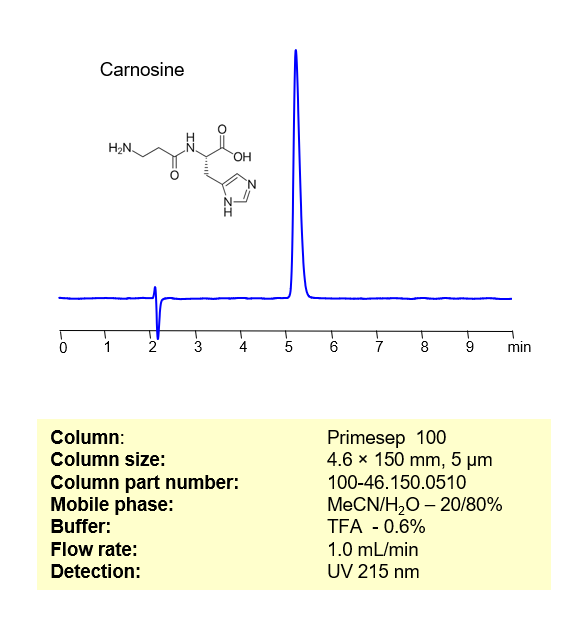HPLC Method for Analysis of Carnosine (beta-alanyl-L-histidine) on Primesep 100 by SIELC Technologies
Separation type: Liquid Chromatography Mixed-mode

Carnosine is a dipeptide molecule synthesized from beta-alanine and histidine. It is a naturally occurring pH buffer with antioxidant properties found in muscles. This dipeptide can be retained and analyzed on a mixed-mode Primesep 100 column with a mobile phase consisting of water, Acetonitrile (MeCN), and Trifluoroacetic acid (TFA). This analytical method can be UV detected at 215 nm with high resolution and peak symmetry.
High Performance Liquid Chromatography (HPLC) Method for Analysis of Carnosine (beta-alanyl-L-histidine)
Condition
| Column | Primesep 100, 4.6 x 150 mm, 5 µm, 100 A, dual ended |
| Mobile Phase | MeCN/H2O – 20/80% |
| Buffer | TFA – 0.6% |
| Flow Rate | 1.0 ml/min |
| Detection | UV 215 nm |
| Peak Retention Time | 5.21 min |
Description
| Class of Compounds | Phenols |
| Analyzing Compounds | Carnosine (beta-alanyl-L-histidine) |
Application Column
Primesep 100
Column Diameter: 4.6 mm
Column Length: 150 mm
Particle Size: 5 µm
Pore Size: 100 A
Column options: dual ended





